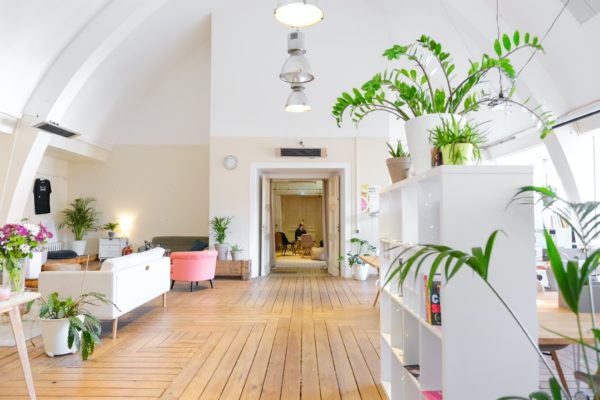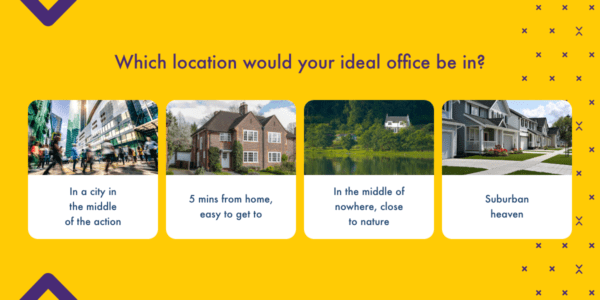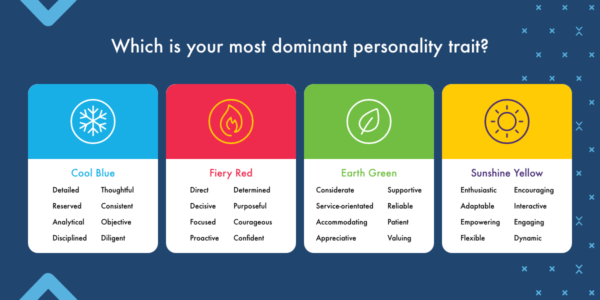
Through the pandemic, many people’s working environments and office experiences have changed in some way, perhaps through less people, more space, less frequent visits, new offices, working-from-home offices – the workplace is in a state of change. With this, it has opened up ways of working with new needs and expectations around what a workspace should offer. This has created a welcome opportunity to review and revamp the working environment, and to do this, people first need to understand what they need and want from their space.
Long gone are rows of desks packed together, tiled grey carpets, clinical white walls, and bright lights for 40+ hours a week; this is an outdated and often unhealthy design to be in for long stretches of time with no natural light and air, or even textures and colours. There are now ways that office spaces can be designed to uplift productivity, creativity, and mental health, through including elements such as plants and greenery, creating natural air flow, and different layouts per individual needs.
With the effects of the pandemic changing how people interact with the office space and an increase in working from home, much has changed around how people want to work moving forward; this includes a new awareness of neurological differences in working styles, and new attitudes around what people want from their office environment. Now, more than ever, there is a need for workspaces to be a benefit to individuals’ moods and working styles, being in sync with the people using the space to enhance the working day.
This is where Flexioffices’ new quiz comes to hand, by helping determine an individual’s perfect work space based on their unique preferences and personality. By answering a few quick questions in under a minute, people are given a custom built recommendation of their ideal working environment based on their unique traits.

There are many psychological theories around people’s behaviours, but one theory has stood out amongst others to explain the differences between how people behave at work. Based on Carl Jung’s research, there are four predominant personality types which break down different behaviours regards to completing a job; this covers differences in how people intake and process information, how people like to work collaboratively – or not, how people like to dress and feel aesthetically while working, what people base their decisions on, and much more. It’s an incredibly insightful blueprint which can help people not only understand themselves and what they personally need at work – which is very often overlooked – but to also help understand their colleagues and how best to communicate with them for a happier and more productive work environment.
For example, some people are seen to be strong-willed and assertive in the workplace, making quick decisions to push things forward, whereas other personality types are thought to view things more analytically and be more cautious in their actions. Colleagues with the ‘Earth Green’ dominant personality type are often the most caring and considerate people in the team, basing decisions on the welfare of anyone involved, while those with the ‘Sunshine Yellow’ dominant personality type are often loud and bring a laugh to team dynamics.

Along with differences of how people interact and process information, the physical space at work can have a huge difference as to how comfortable and stimulated people feel to be able to get into the flow of a task. This can include more obvious things that people are aware of, for example, the differences between working at a private desk or in a busy hot desk environment, but smaller factors are also found to make a huge difference, including lighting and smells, to colours and textures used across office furniture.
All of these elements are important in determining what people want and need in a working space and what would work best for individuals, and can be the difference between feeling drained or charged whilst at work. For example, people who prefer working alone may benefit from working within an office with a smart tech aesthetic, whereas others who like to work more collaboratively could benefit from a human centric aesthetic in their workspace.
Michael Dubicki, Director of Business Development at Flexioffices, commented: “We’re really excited to see so much more conversation around understanding that people need different things from their space to thrive. However you want to use a work space, it’s so important to ensure the environment works in a positive way and is somewhere people look forward to being in. An office is more than just four walls but people often forget to consider and discuss the impact of their environment while working, so hopefully this quiz makes it really easy to understand what your ideal office should look like so you can make it happen!”
Flexioffices holds a hub of thousands of office spaces across the UK which have been created uniquely to work with many different teams through helping them find the perfect space for their needs. With a lot of people re-evaluating how they work and what they need from an office space, now is the time to explore what the perfect workspace could look like as the world is creating ‘new normals’.
To find out more about your working personality type and what your perfect office space looks like visit here.
